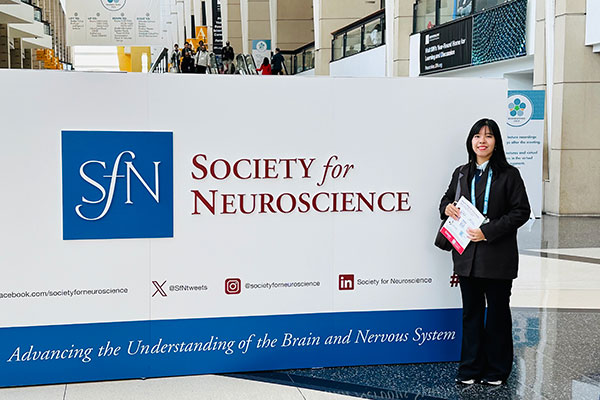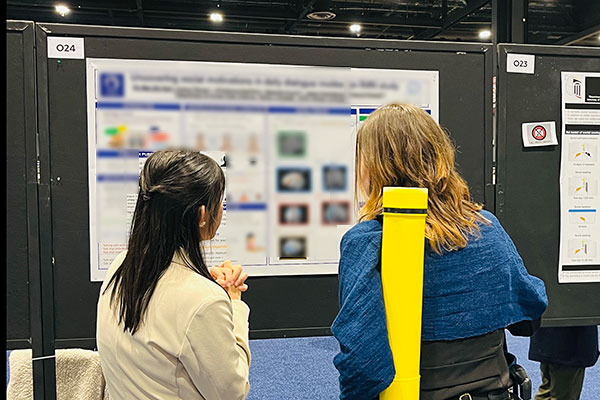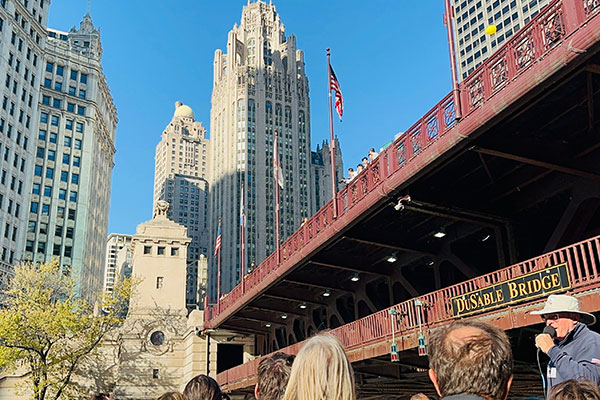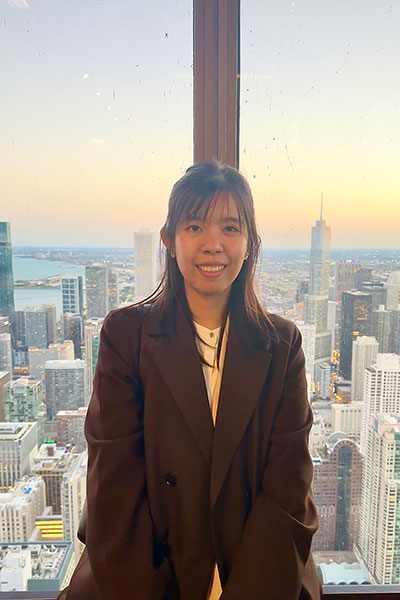TOPICS
2024.10.9
NGP Fellowship Report:Society for the Neuroscience 2024 in Chicago.
School of Medicine
D1 Yin May Zin Han
I had the incredible opportunity to attend the 53rd annual meeting of the Society for Neuroscience, held from October 5th to 9th, 2024, at McCormick Place Convention Center in Chicago, U.S. This conference is the biggest gathering of neuroscientists worldwide, and it brought together researchers from many different fields, ranging from genetics to behavior and brain imaging. The sessions covered a huge range of topics, and I was especially interested in those related to Cognitive Neuroscience, which is my field of study. I am very grateful to the Neuro Global Fellowship Program (NGP) for supporting my trip, which allowed me to attend the conference in person.
Since this was my first time attending an international conference, the whole experience was new and exciting for me. Over five days, I was able to learn so much, meet amazing people, and gain new ideas for my own research. One of the highlights of the first day was a talk by Susan Magsamen, a leading researcher in a field called NeuroArt, which is about the connection between neuroscience and art. Susan is from Johns Hopkins University School of Medicine and has written a book called Your Brain on Art: How the Art Transforms Us. Her talk explained how art—whether it's music, painting, or other forms—can have a big effect on our health and well-being. She talked about how art is important in education, personal development, and even in improving mental health.
During the talk, we were each given a small instrument called a Kazoo, which had the conference logo on it. We all played the Kazoo together during the session, which was a fun way to bring everyone together. It helped me feel more relaxed and connected with the other attendees, and it set a positive tone for the rest of the conference.
As I explored the conference, I was really impressed by the variety of topics being discussed. There were so many different presentations, including those focused on introducing neuroscience to younger students and to the public. Neuroscience is often thought of as a subject for graduate students and professionals, but I realized how important it is to make this knowledge accessible to everyone. Many researchers were passionate about promoting neuroscience education, which made me think about how we can help people better understand human behavior and neurological diseases.
One of the biggest moments for me was when I presented my own research. On the last day of the conference, I delivered a poster presentation titled Uncovering Social Motivations in Daily Dialogue Modes: An fMRI Study. My research looks at how people communicate in daily conversations and what motivates them to do so. We identified four types of dialogue modes—Relief, Novelty, Comfort, and Interest—and studied their brain activity using fMRI. We used avatar videos to simulate conversations, which allowed us to observe brain responses.
Even though I was a bit nervous at first, once I started explaining my work, I became more comfortable. Several researchers stopped by to listen to my presentation, and we exchanged ideas and suggestions. I received useful feedback, especially about the avatars we used in our experiment. Some researchers gave tips on how to make the facial expressions and voices of the avatars more natural to improve participant engagement. This feedback will be really helpful for improving my future research.
One memorable moment was when a researcher studying Autism Spectrum Disorder (ASD) showed interest in my work. He thought that my research could be applied to understanding social communication challenges in people with ASD and suggested we keep in touch for possible collaboration in the future. This was really exciting, as I hadn't considered the possibility of applying my research to neurodevelopmental disorders before.
Another great experience was meeting a famous Japanese neuroscientist whose work I have admired for a long time. I was able to chat with him, and he introduced me to his lab team, who also attended my poster presentation. They gave me more feedback and ideas, and this connection was one of the highlights of the conference for me.
The conference gave me a firsthand look at the benefits of attending in-person events. I saw how passionate people are about their research, and I got to participate in discussions where scientists shared ideas, challenged each other's findings, and brainstormed together. These conversations were really inspiring and made me even more excited to continue my own research and improve it based on the feedback I received. I now feel more motivated to publish my work and share it with the larger scientific community.
In addition to presenting my own research, I also attended many other talks and poster sessions that were related to my field. One talk that stood out to me was by Laetitia et al., called The Neural Alignment During Real-Time Conversation Among Friends and Strangers. This study focused on how people's brain activity synchronizes when they talk to each other, and it used a technique called fMRI hyperscanning, where two people's brains are scanned at the same time. The study's focus was different from mine, but there were interesting overlaps in the brain regions we both studied. This inspired me to think about new directions for my own research and to explore more about how brain alignment happens during conversations.
Outside the conference, I also enjoyed exploring Chicago. The city's impressive skyline and beautiful architecture added to the overall experience. Walking around downtown and seeing the famous landmarks of Chicago made the trip even more memorable. These personal moments, along with the professional ones, made this trip an unforgettable experience.
I am deeply thankful to the Neuro Global Fellowship Program for providing the financial support that made this journey possible. I also want to thank my professors and colleagues for encouraging me to attend the conference. This experience has inspired me to continue my research and to present my work at future conferences. It was incredibly valuable to share my research with others, get feedback, and meet fellow scientists from around the world.
Overall, attending the Society for Neuroscience conference was a defining moment in my academic journey, and I'm eager to take what I've learned and apply it to my future research.




